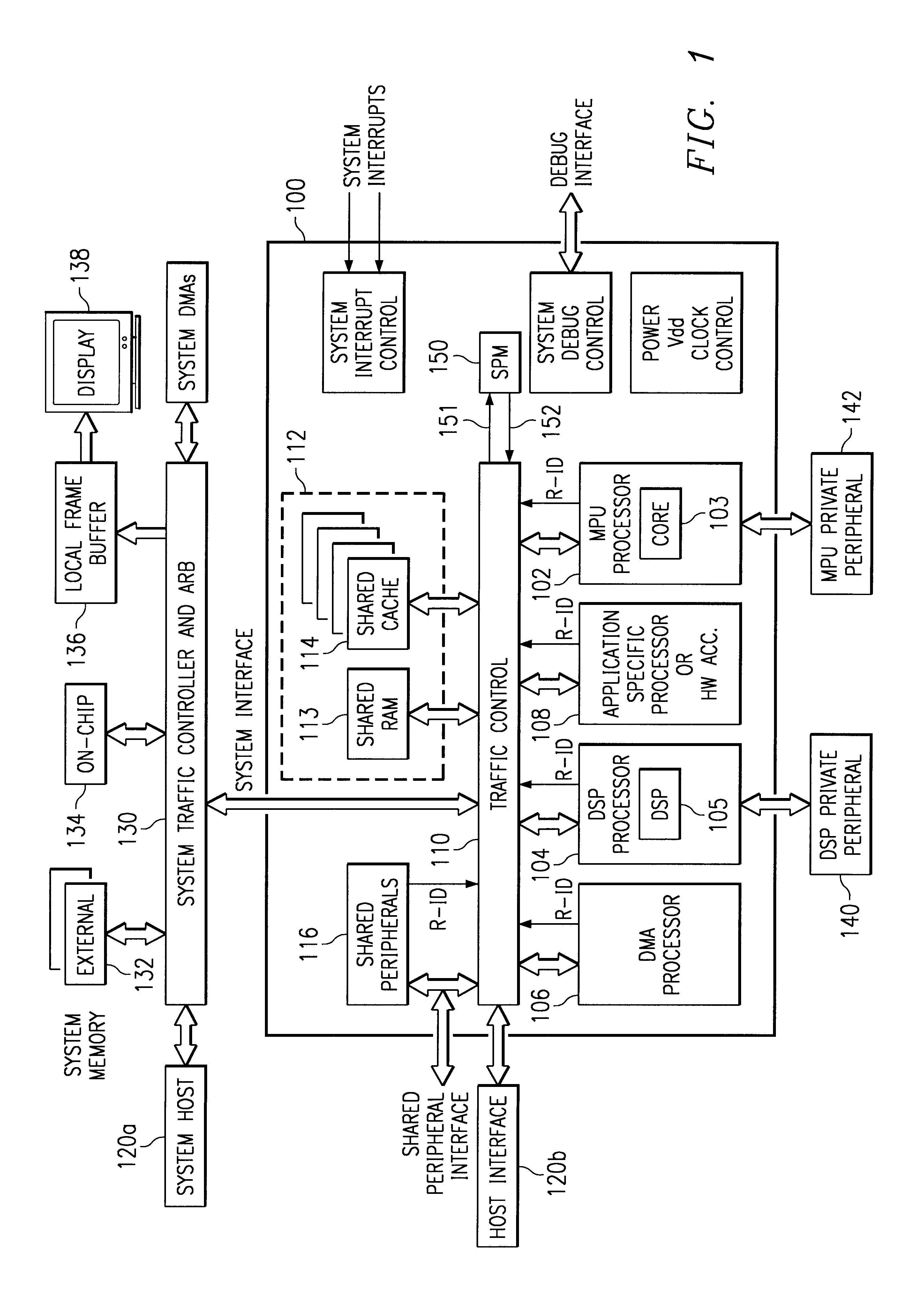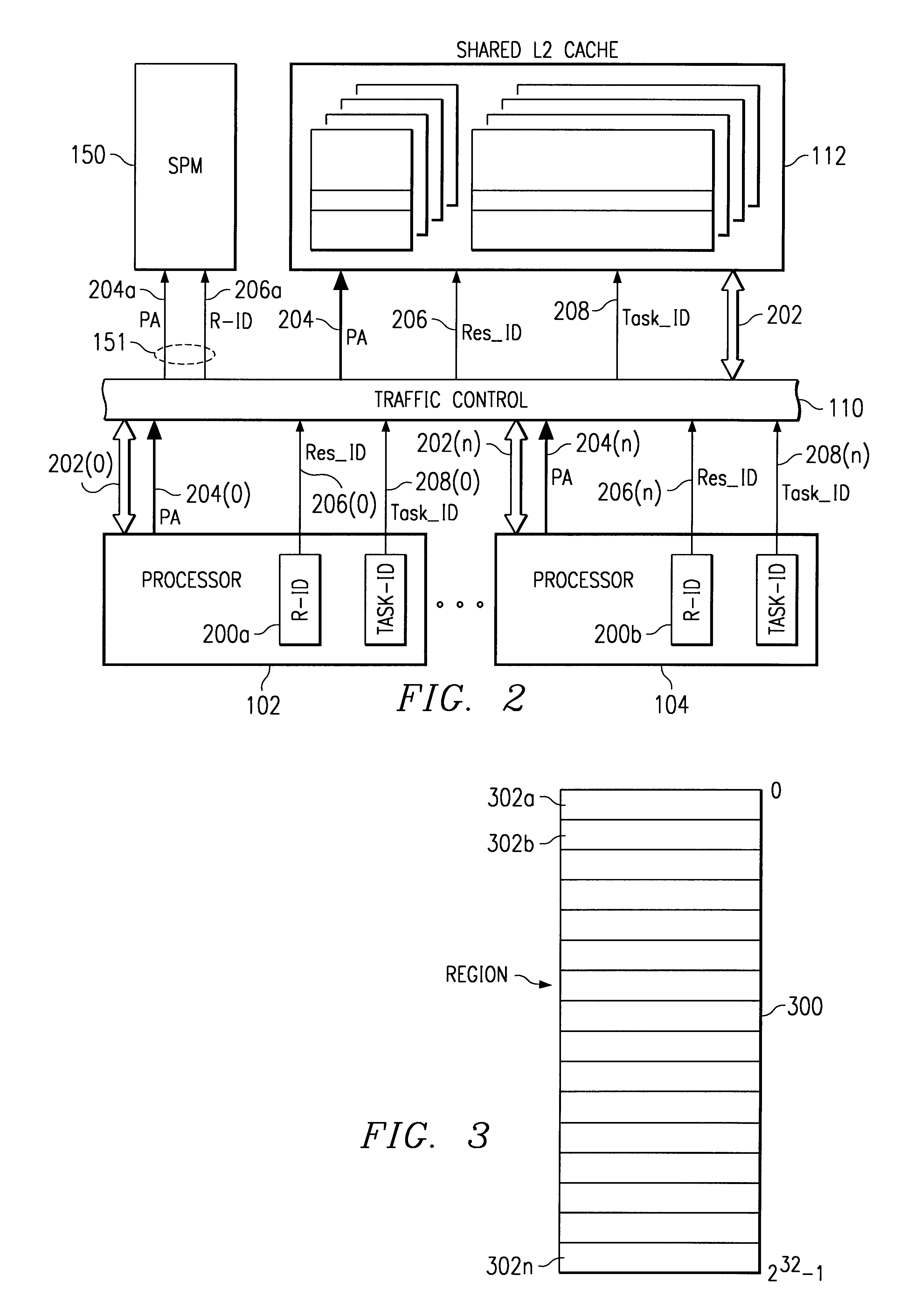System protection map
a system protection and map technology, applied in the field of microprocessors, can solve problems such as resource allocation problems, system operation may be dire, and use of memory or peripheral devices may have dire consequences for system operation
- Summary
- Abstract
- Description
- Claims
- Application Information
AI Technical Summary
Benefits of technology
Problems solved by technology
Method used
Image
Examples
Embodiment Construction
System protection cannot prevent conflict, so to speak. If OS 1 on processor A and OS 2 on processor B both think they have total control of device D, then there is a problem. Protection doesn't really make that problem go away, it only detects failures of partitioning of the system. To be successful, the OS's must cooperate in partitioning the system, either statically or dynamically. A system protection map (SPM) can then ensure that the agreed upon partitioning is actually followed.
To partition statically, a system developer allocates resources (memory and devices) to each processor and this partitioning doesn't change during system operation. This works well in many embedded systems.
A more interesting situation is when the partitioning may be changed during operation. In this case, there must be a means of negotiation for system resources and a means of updating the SPM.
A partitioning is most interesting if there are some resources that may be shared between the two OSs and that...
PUM
 Login to View More
Login to View More Abstract
Description
Claims
Application Information
 Login to View More
Login to View More - R&D
- Intellectual Property
- Life Sciences
- Materials
- Tech Scout
- Unparalleled Data Quality
- Higher Quality Content
- 60% Fewer Hallucinations
Browse by: Latest US Patents, China's latest patents, Technical Efficacy Thesaurus, Application Domain, Technology Topic, Popular Technical Reports.
© 2025 PatSnap. All rights reserved.Legal|Privacy policy|Modern Slavery Act Transparency Statement|Sitemap|About US| Contact US: help@patsnap.com



